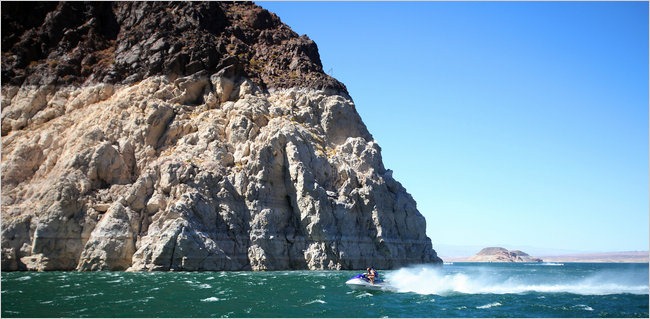Worst drought in recorded history to trigger shortage plan in Southwest US
By FELICITY BARRINGER
September 27, 2010 LAKE MEAD NATIONAL RECREATION AREA, Nev. — A once-unthinkable day is looming on the Colorado River. Barring a sudden end to the Southwest’s 11-year drought, the distribution of the river’s dwindling bounty is likely to be reordered as early as next year because the flow of water cannot keep pace with the region’s demands. For the first time, federal estimates issued in August indicate that Lake Mead, the heart of the lower Colorado basin’s water system — irrigating lettuce, onions and wheat in reclaimed corners of the Sonoran Desert, and lawns and golf courses from Las Vegas to Los Angeles — could drop below a crucial demarcation line of 1,075 feet. If it does, that will set in motion a temporary distribution plan approved in 2007 by the seven states with claims to the river and by the federal Bureau of Reclamation, and water deliveries to Arizona and Nevada would be reduced. This could mean more dry lawns, shorter showers and fallow fields in those states, although conservation efforts might help them adjust to the cutbacks. California, which has first call on the Colorado River flows in the lower basin, would not be affected. … Nonetheless, said Terry Fulp, the bureau’s deputy regional director for the Lower Colorado Region, it is the first time ever that the bureau has judged a critical shortage to be remotely possible in the near future. “We’re approaching the magical line that would trigger shortage,” Mr. Fulp said. “We have the lowest 11-year average in the 100-year-plus recorded history of flows on the basin.” The reservoir is now less than 15 inches above the all-time low of 1,083.2 feet set in 1956. But back then, while the demand from California farmland was similar, if not greater, the population was far smaller. Perhaps 9.5 million people in the three states in the lower Colorado River basin depended on the supply in the late 1950s; today more than 28 million people do. The impact of the declining water level is visible in the alkaline bathtub rings on the reservoir’s walls and the warning lights for mariners high on its rocky outcroppings. National Park Service employees have repeatedly moved marinas, chasing the receding waterline. …
